Beyond the Six-Pack: Why Your Running Success Starts with a Rock-Solid Core (and How to Build It)
Let’s cut to the chase: if you're serious about running stronger, faster, and injury-free, you absolutely cannot ignore your core. Forget the washboard abs for a minute – we're talking about the deep, powerful muscles that act as your body's central command center while you run. Think of your core not as decoration, but as the forgotten powerhouse that makes everything else work better.
Why Your Core Isn't Just About Looking Good (The Runner's Engine Room)
Picture this: you're mid-stride. One foot hits the ground, sending forces rippling up your leg. Without a strong core, that energy doesn’t transfer efficiently. Your pelvis tilts, your lower back twists, your shoulders slump. It’s like trying to fire a cannon from a canoe – inefficient and wobbly!
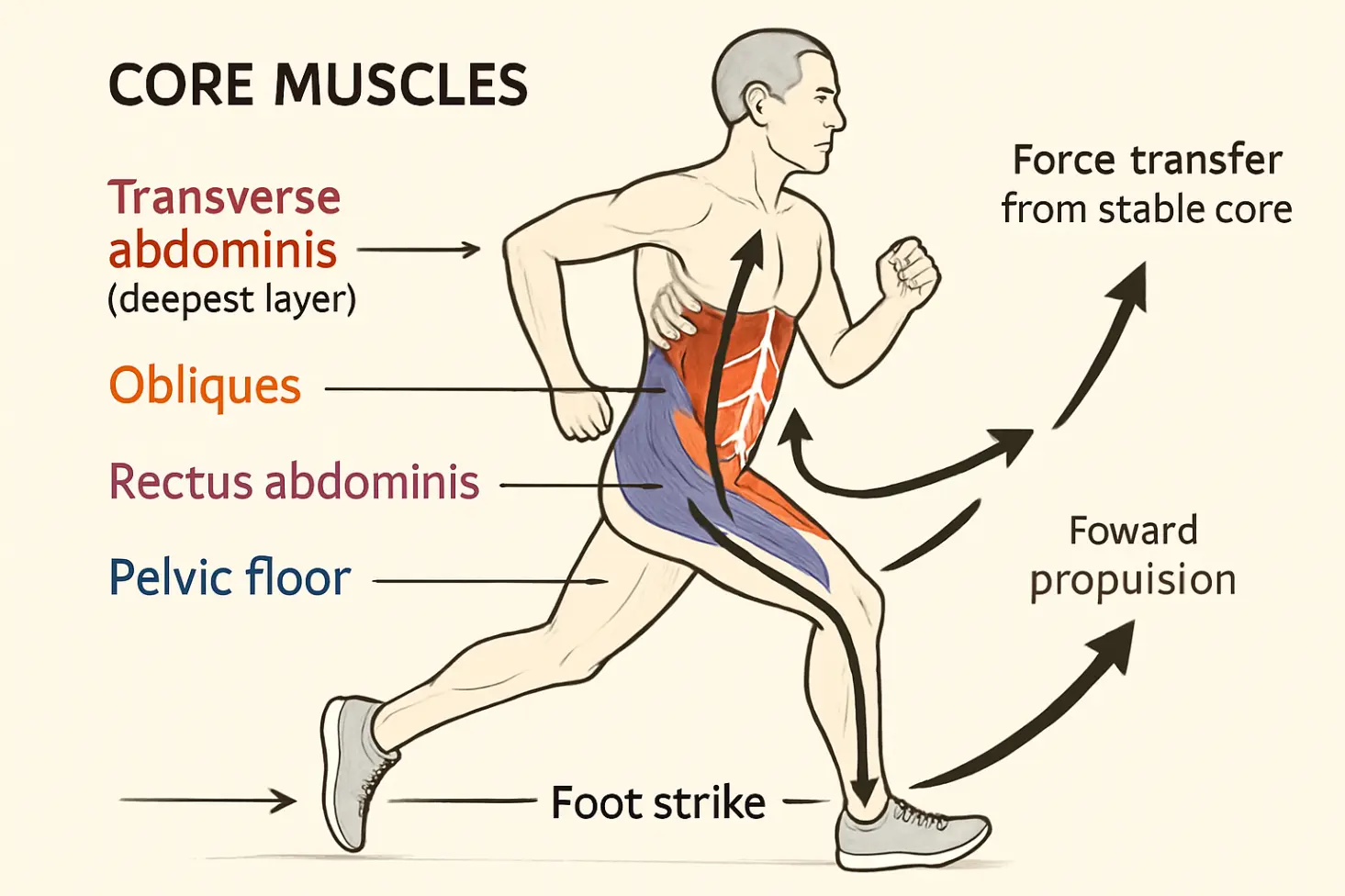
Here’s the science-backed reality:
Stability & Efficiency: Your core (encompassing muscles like the transverse abdominis, obliques, pelvic floor, multifidus, and yes, the rectus abdominis) stabilizes your pelvis and spine. This prevents excessive rotation and side-to-side sway. A stable base means your legs can swing freely and powerfully without wasted energy. A study published in the Journal of Strength and Conditioning Research found that core fatigue significantly altered running mechanics, leading to decreased efficiency and potentially increased injury risk.
Injury Prevention: Weak core muscles force smaller muscles (like your hip flexors and lower back) to work overtime, often leading to common running woes: IT band syndrome, runner's knee, shin splints, and lower back pain. Dr. Bryan Heiderscheit, a renowned running biomechanist, emphasizes that "proximal stability facilitates distal mobility." Translation: a stable core lets your arms and legs move powerfully and safely.
Power Transfer: Your legs generate force, but your core transmits it. A strong core acts like a solid foundation, allowing the power from your push-off to propel you forward effectively, not get lost in torso wobble. This translates directly to better speed and endurance.
Posture & Form: Ever seen a runner collapsing forward at mile 10? Core fatigue is a prime culprit. A strong core helps maintain an upright, relaxed posture, allowing optimal lung expansion and efficient arm swing mechanics throughout your run.
Building Your Runner's Core: Exercises That Actually Matter
Forget endless crunches. Runner-specific core strength is about anti-movement: resisting rotation, resisting extension, resisting flexion, and resisting lateral bending. We need exercises that teach your core to stabilize while your limbs are moving – just like in running.
Start Simple: The Foundational Four (Do these 2-3x per week)
The Dead Bug (Anti-Extension & Coordination):
Why: Teaches your core to resist your lower back arching off the floor, crucial for maintaining posture while running. Engages deep transverse abdominis.
How: Lie on your back, knees bent 90 degrees over hips, arms straight towards the ceiling. Slowly lower one arm overhead towards the floor while simultaneously straightening the opposite leg towards the floor. Keep your lower back FLAT against the mat – don’t let it arch! Pause just above the floor, then slowly return to start. Alternate sides. Focus: Controlled movement, constant core tension, no rocking.
Progression: Move slower, lower limbs closer to the ground without arching, add light ankle weights.
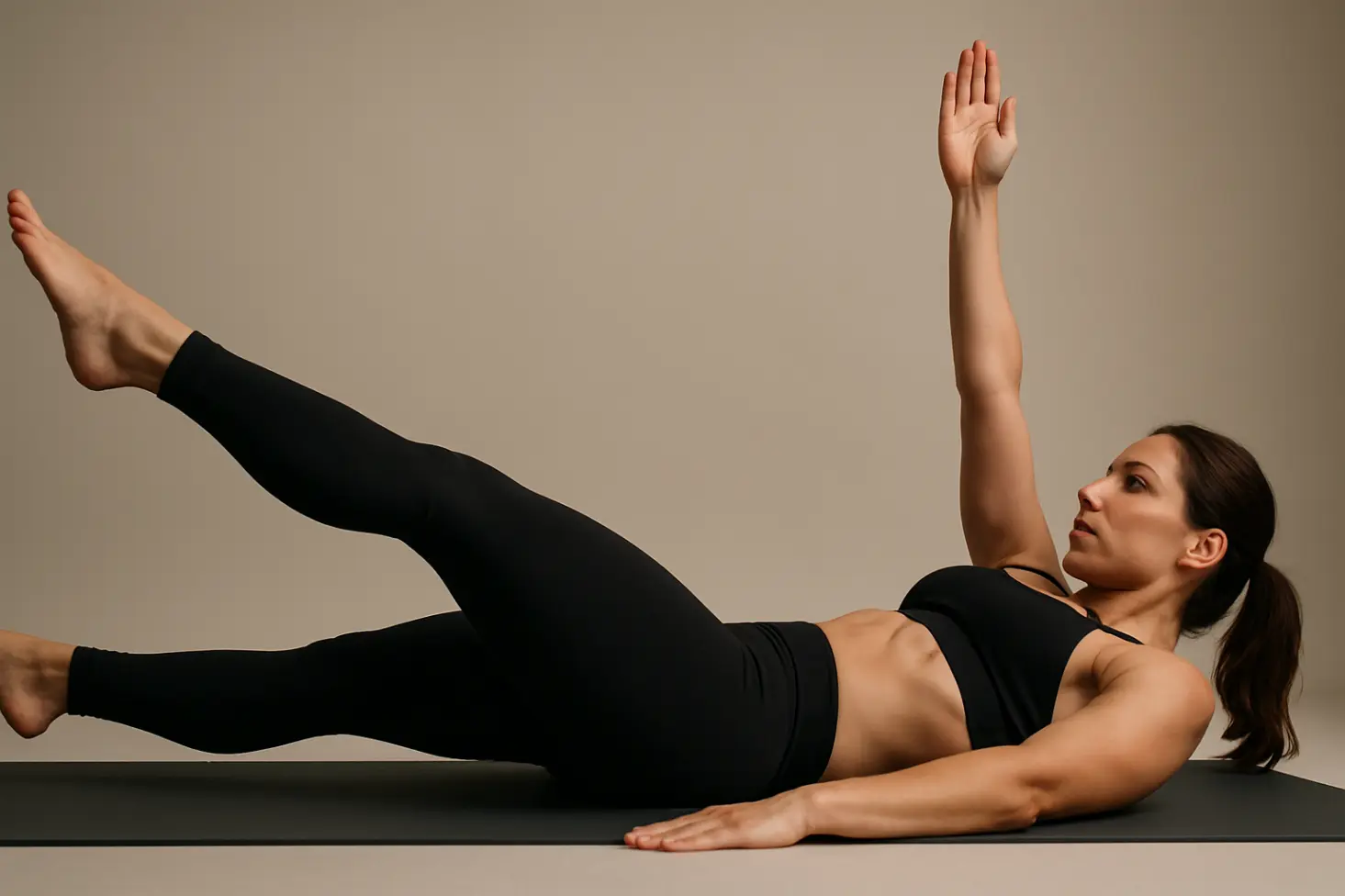
The Plank (Anti-Extension & Global Stability):
Why: Builds endurance in the entire anterior core chain. Essential for resisting collapse during long runs.
How: Forearms on floor, elbows under shoulders, body in a straight line from head to heels. Engage your glutes and core HARD – imagine pulling your belly button towards your spine and squeezing your butt. Don’t let hips sag or pike up. Focus: Quality over quantity. Start with 3 sets of 15-30 seconds with perfect form.
Progression: Increase hold time, lift one foot slightly off the ground (keep hips level!), move to a high plank (on hands).
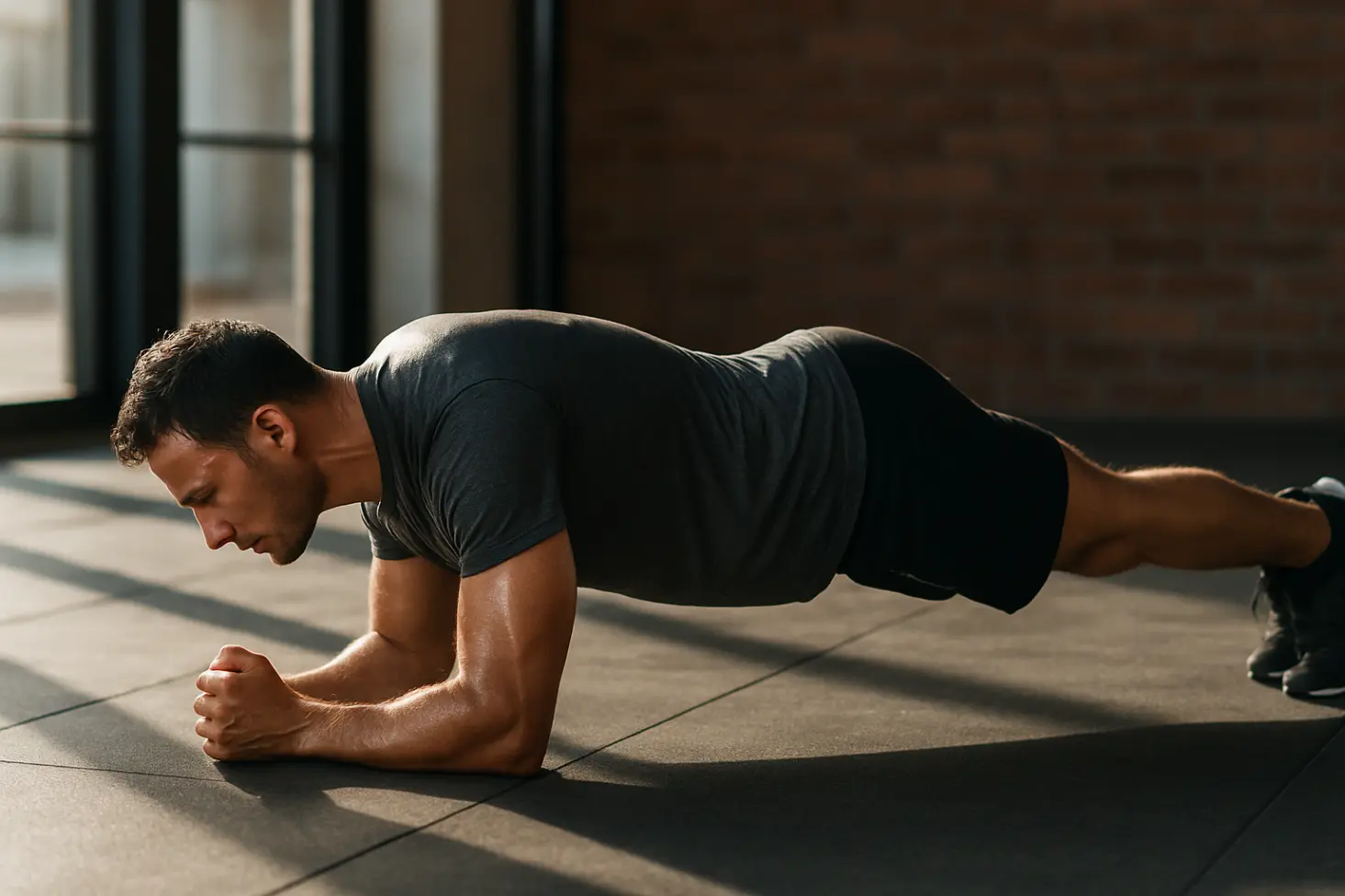
Side Plank (Anti-Lateral Flexion):
Why: Crucial for preventing hip drop (a major contributor to ITBS and knee pain). Strengthens obliques and quadratus lumborum.
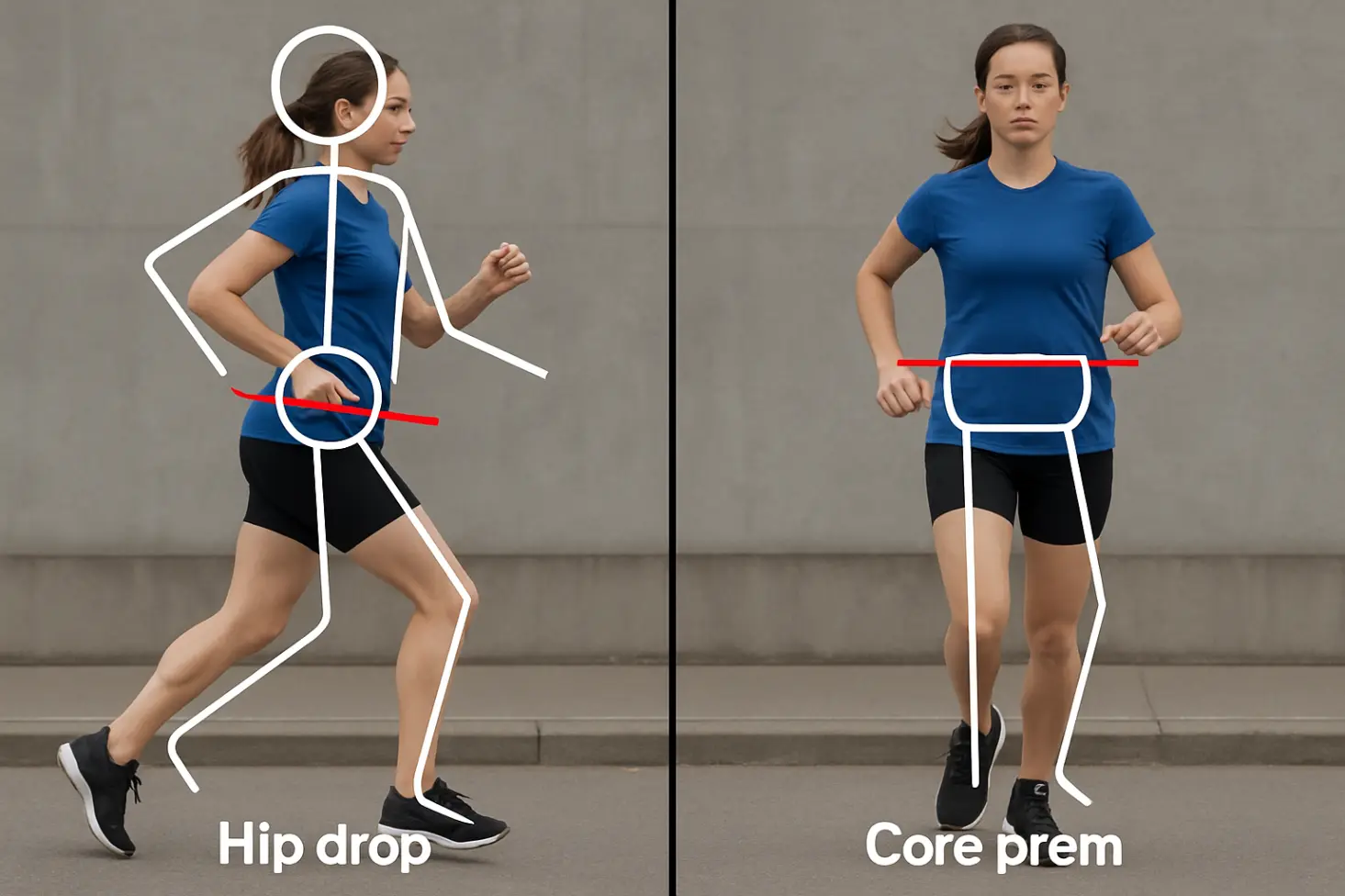
How: Lie on your side, legs stacked. Prop yourself up on your bottom forearm (elbow under shoulder). Lift your hips off the ground, forming a straight line from head to feet. Engage core and glutes. Focus: Don’t let hips sag backwards or forwards. Keep neck neutral.
Progression: Hold longer, lift the top leg, perform on hand instead of forearm.
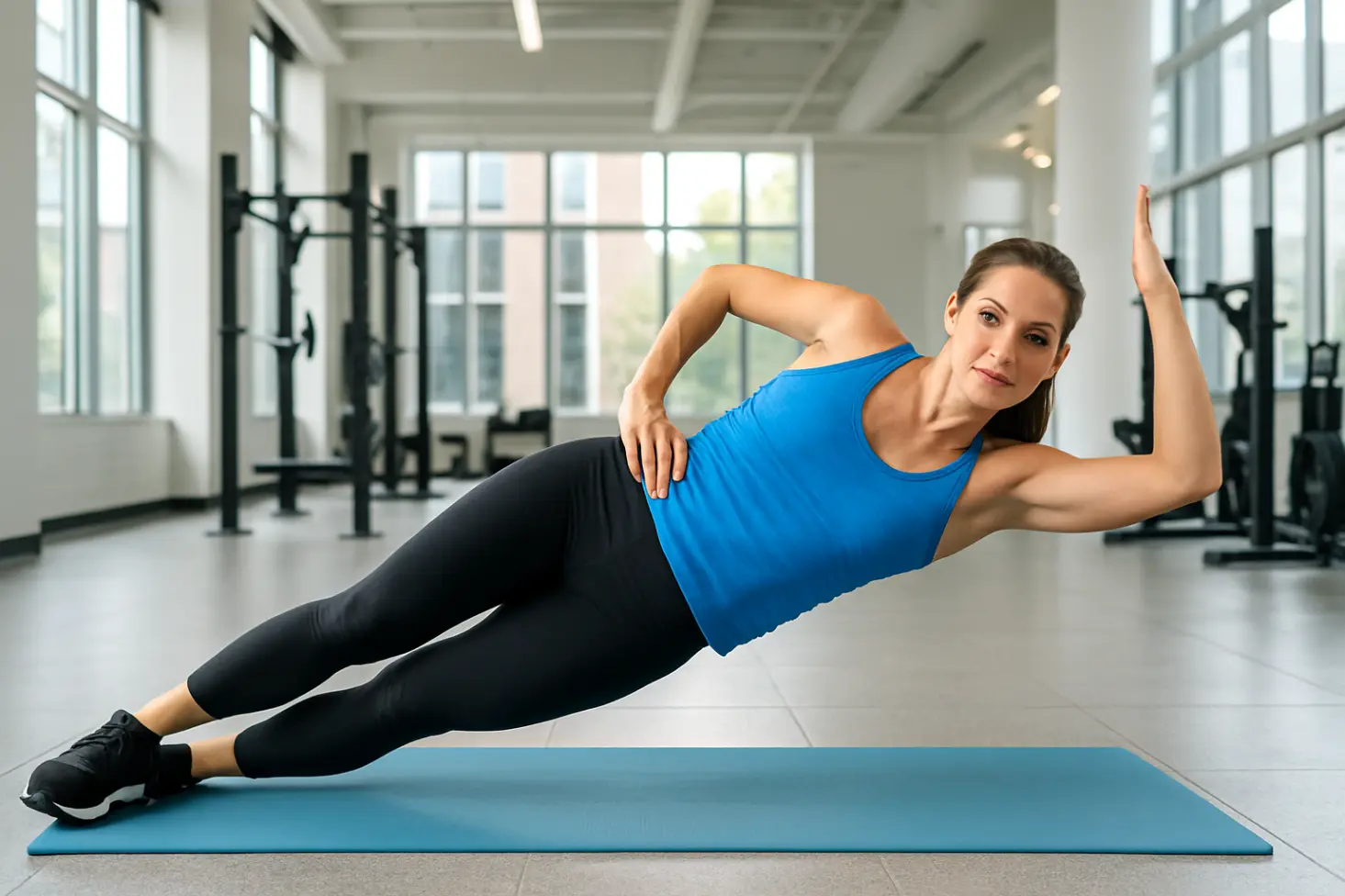
Bird-Dog (Anti-Rotation & Coordination):
Why: Teaches your core to resist rotation while limbs move independently, mimicking the running gait. Improves balance and proprioception.
How: On hands and knees (tabletop position), wrists under shoulders, knees under hips. Engage core to keep spine neutral (no sagging or rounding). Slowly extend one arm straight forward while simultaneously extending the opposite leg straight back. Keep hips and shoulders square to the floor – don’t let them rotate! Hold briefly, return slowly with control. Alternate sides. Focus: Slow, controlled movement, minimal torso movement.
Progression: Hold longer, move slower, add light wrist/ankle weights.
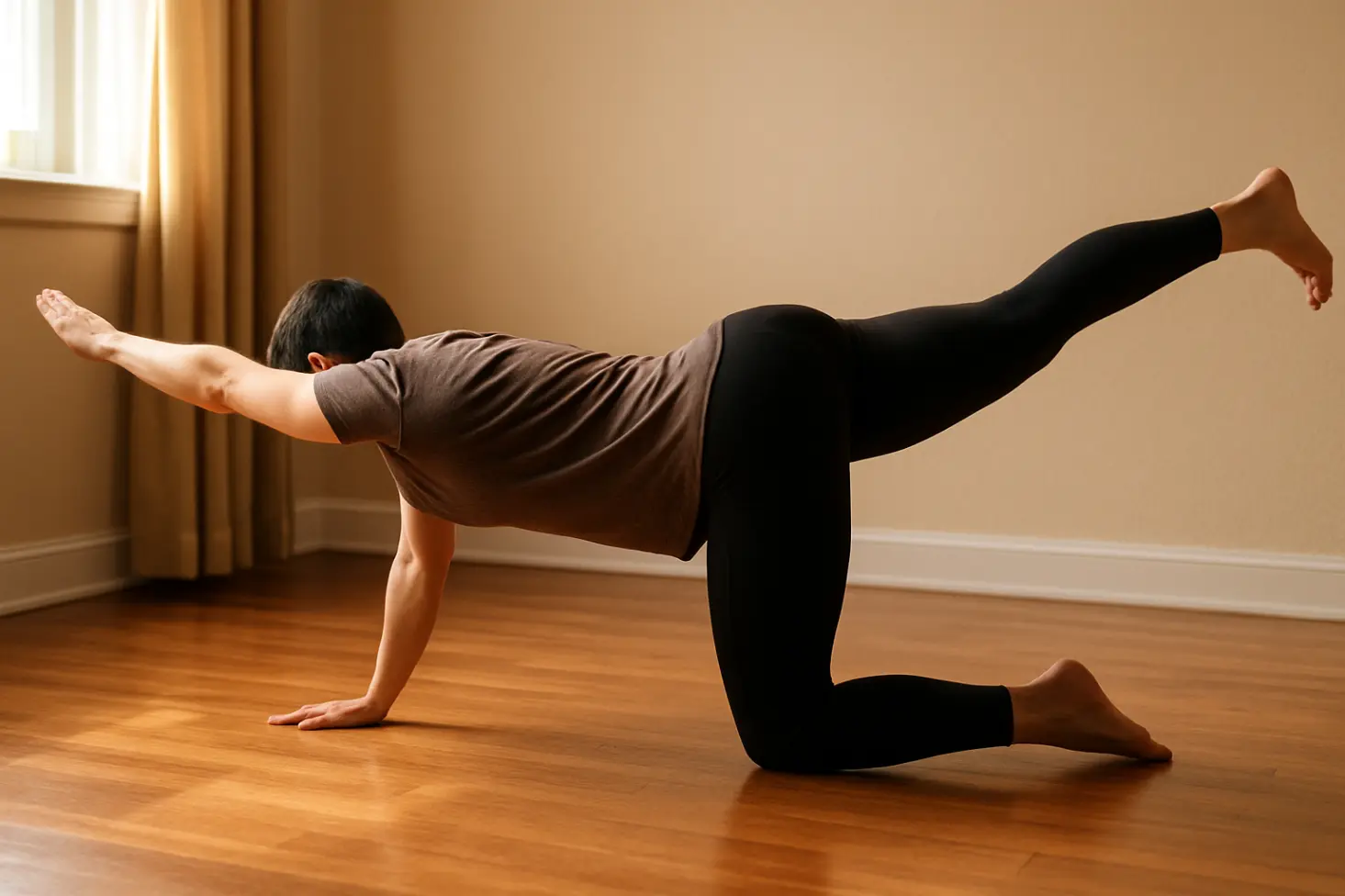
Level Up: Adding Dynamic Strength (After mastering the basics)
Stability Ball Stir-the-Pot (Anti-Rotation & Anti-Extension):
Why: Intensifies plank stability by adding an unstable surface and dynamic movement. Deeply challenges transverse abdominis and obliques.
How: Start in a high plank position with shins on a stability ball. Keeping your body rigid and core braced, slowly make small circles with your forearms/elbows, "stirring" the pot. Keep hips level! Focus: Small, controlled circles. Start with 5-10 seconds each direction.
Pallof Press (Anti-Rotation):
Why: Pure anti-rotation gold. Forces your core to resist being pulled sideways, building crucial stability for maintaining form when fatigued or on uneven terrain.
How: Stand perpendicular to a cable machine or resistance band anchored at chest height. Hold the handle/band with both hands at your sternum. Step away to create tension. Brace your core as if bracing for a punch. Slowly press the handle straight out in front of you, resisting the band's pull to rotate you. Hold briefly, slowly return. Focus: Keep shoulders and hips square forward. No cheating by leaning back!
Progression: Increase resistance, stand on one leg, perform kneeling or half-kneeling.
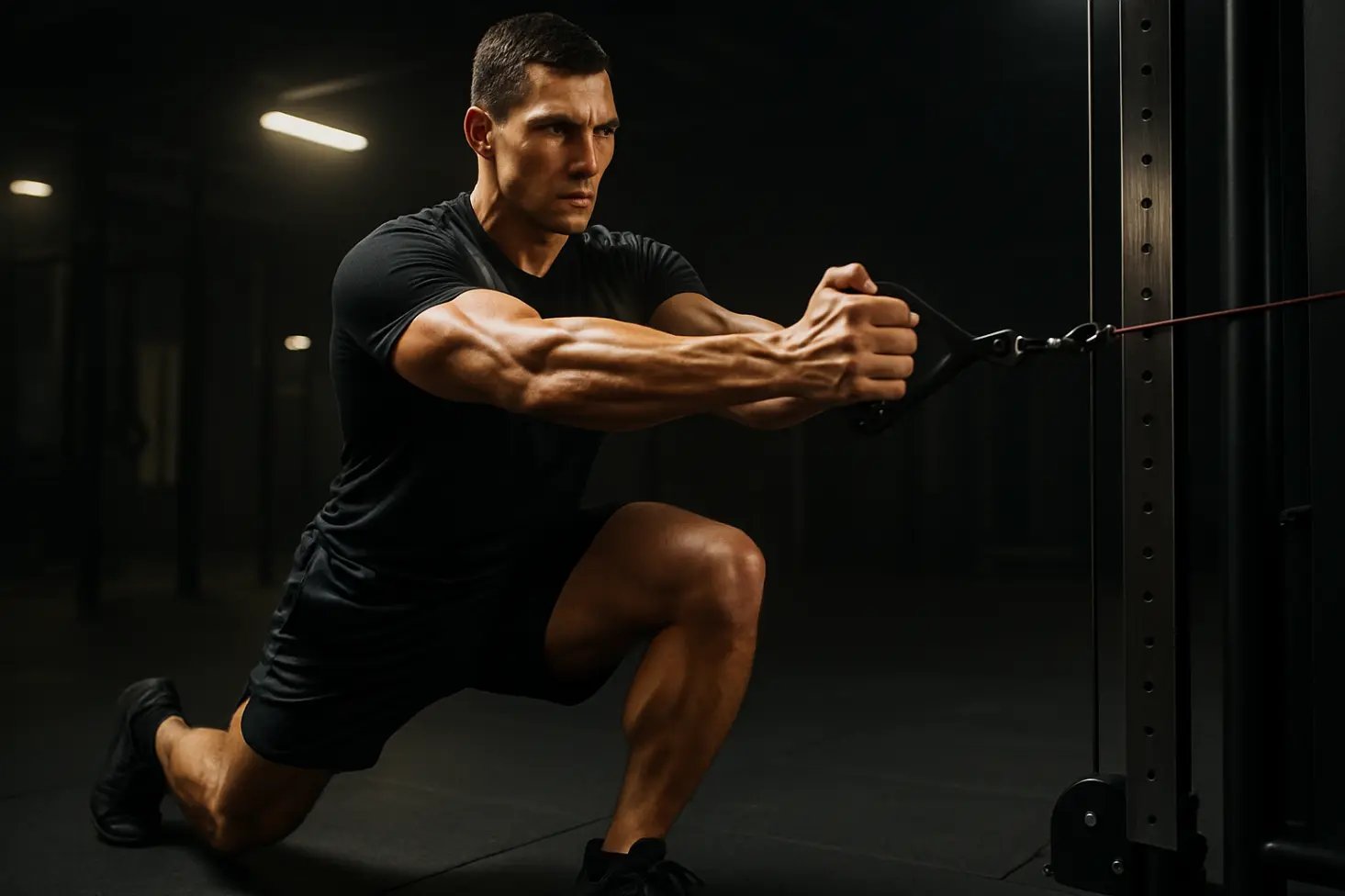
Single-Leg Glute Bridge (Hip Stability & Posterior Chain Link):
Why: While primarily a glute exercise, this forces your core (especially obliques) to fire intensely to prevent your torso from twisting as you lift on one leg. Essential for single-leg stability during running.
How: Lie on back, knees bent, feet flat. Extend one leg straight out. Drive through the heel of the planted foot, lifting hips towards the ceiling until body forms a straight line from shoulders to knee. Squeeze glutes at the top. Keep hips level – don’t let one side dip! Lower slowly. Focus: Controlled lift, level hips, glute engagement.
Integrating Core Work into Your Running Life: Practical Wisdom
Frequency: Aim for 2-3 dedicated core sessions per week, lasting 15-20 minutes. Consistency is key!
Timing: Do core work after an easy run, on a cross-training day, or as a separate session. Avoid heavy core work immediately before a hard run or race – it can fatigue stabilizing muscles you need.
Form First: Always prioritize perfect technique over reps, weight, or speed. A poorly performed plank is worse than useless. If your form breaks, stop the set.
Mind-Muscle Connection: Don’t just go through the motions. Actively think about engaging your deep core muscles (transverse abdominis – imagine cinching a corset tight around your waist) during every exercise.
Listen to Your Body: Mild muscle fatigue is good; sharp pain is bad. Stop if something hurts.
Patience: Core strength builds gradually. Don't expect overnight miracles, but within 4-6 weeks of consistent work, you will feel a difference in your running posture and resilience.
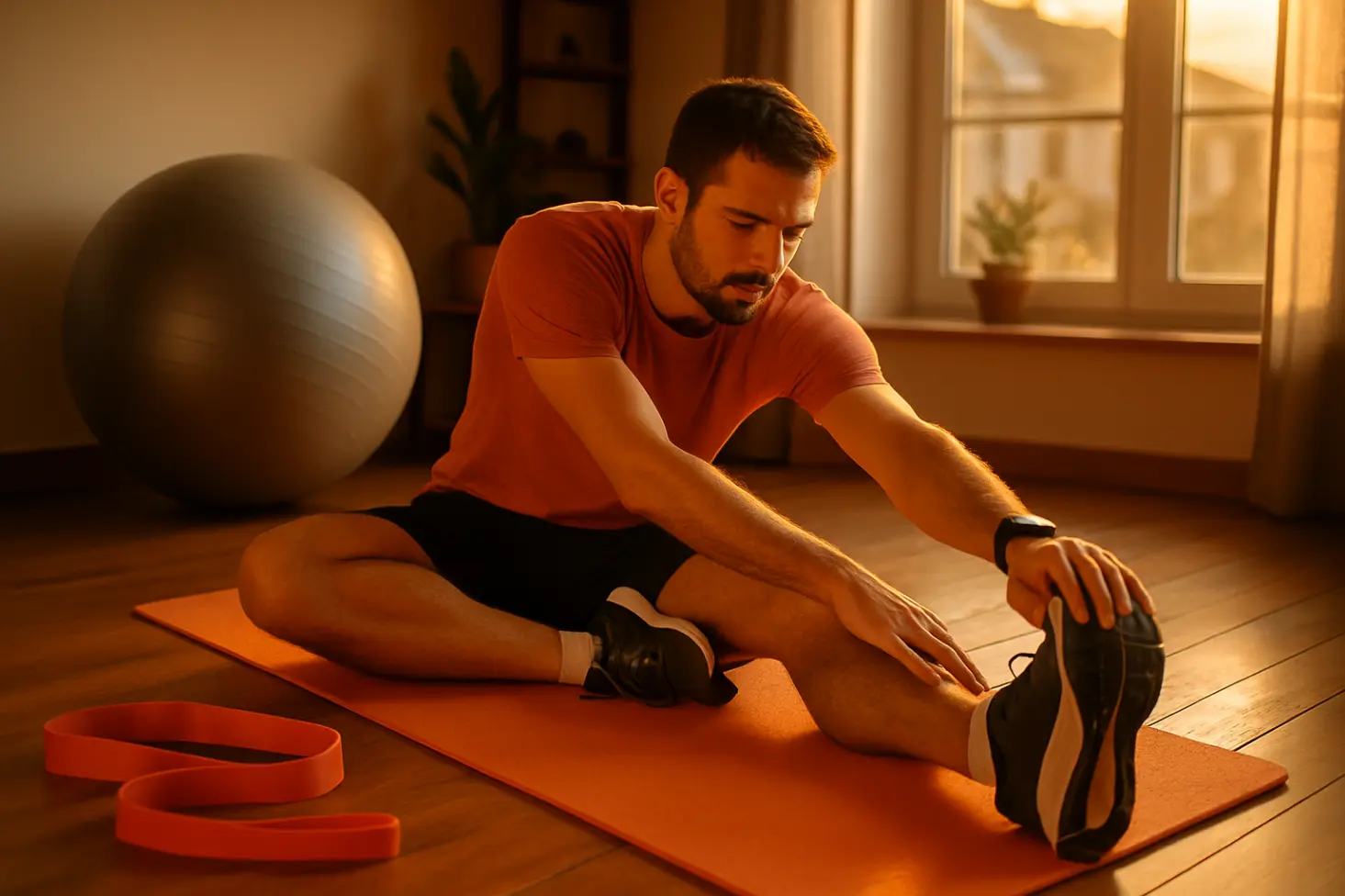
The Finish Line: It's Not Optional, It's Essential
Building a strong core isn't about chasing aesthetics; it's about building the fundamental stability and power transfer system that makes you a better, healthier runner. Think of it as the chassis of your car – no matter how powerful the engine (your legs), a weak chassis makes the whole thing inefficient and prone to breakdown.
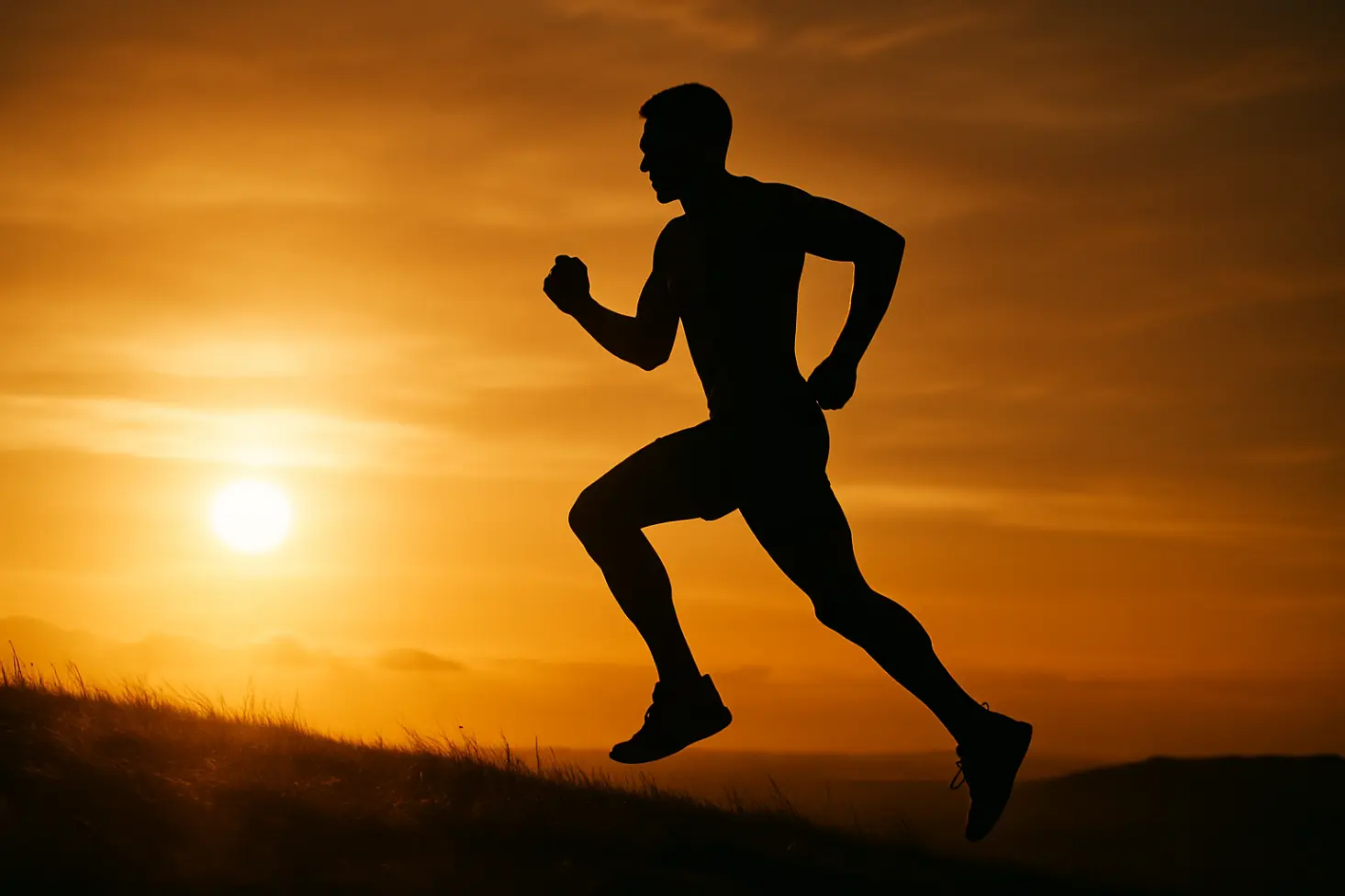
Investing time in these targeted exercises pays dividends: smoother stride, less wasted energy, fewer frustrating injuries, and ultimately, more enjoyment and success on the road or trail. Ditch the crunches, embrace the plank, the bird-dog, and the Pallof press. Your running future – and your back – will thank you profoundly. Now, lace up, strengthen up, and run strong!